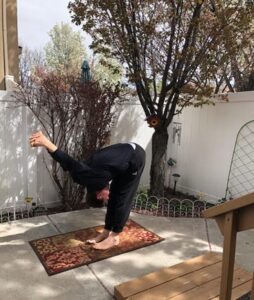In the yoga world, there are differences of opinion on this. On one side are those who advocate, “Stretch it out.” Their belief is the further you can get yourself to stretch, the more tension you can relieve.
Then there are those on the other side who urge caution, saying that stretching out a tight or spasmed muscle risks injury. This is the side I am on.
Ponder, for example, what happens when you go to bend a dried branch. It breaks. Depending on how tight and tense a muscle is, stretching to the max risks “a breaking” of sorts. It might actually trigger a spasm or strain a muscle.
This leads us to the safest way to relieve tension. One of the first principles of tai chi yoga is to stretch only as far as is comfortable for you. If a particular set of muscles has tension, then stretch only as far as those muscles are comfortable stretching, no further. Unlike regular exercise which often advocates “No Pain, No Gain,” tai chi yoga takes a gentler, kinder path.
Once we have stretched as far as is comfortable for tension-filled muscles, instead of forcing them to stretch further, we relax in the stretch, focusing on the active squeezing of the muscles of the stomach in rhythm with the breathing (squeezing in as we exhale, expanding out as we inhale). The only tension thus should be in the stomach from this active squeezing. I consider the stomach as the power center for relaxing tension.
That active stomach squeezing while in a relaxed yoga stretch actually sends healing energy to the tension-filled muscles, helping them relax and unwind over time.
John in a Chest Expansion 2019
The final ingredient to maximize the relaxation of tension is the flow of tai chi. When combined with the gentle stretching of yoga, the floating sensation from tai chi movements ripples waves of relaxation throughout the body, helping tense muscles unwind over time.

